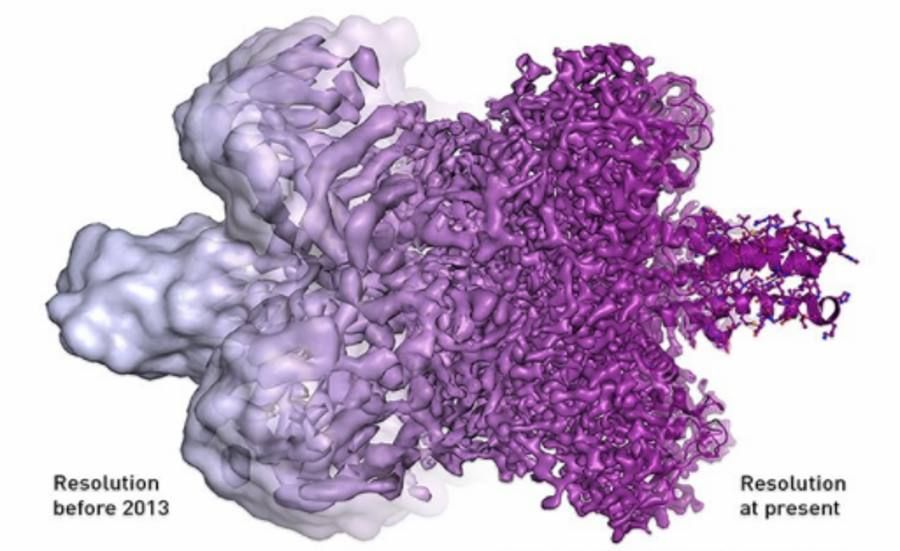Prof. Dziedzicka-Wasylewska: Nobel in chemistry shows interdisciplinarity of science
This year’s Nobel Prize in chemistry shows that modern science is an interdisciplinary endeavor. Indeed, cryo-electron microscopy is of colossal importance for biology and biochemistry,” said Prof. Marta Dziedzicka-Wasylewska of the Jagiellonian University.
On Wednesday, KróThe left Swedish Academy of Sciences has announced that this year’s Nobel Prize in Chemistry will be awarded to: Jacques Dubochet, Joachim Frank and Richard Henderson. They were honored for their work on cryo-electron microscopy, whichóra allows imaging of large biological molecules at near-atomic resolution.
– Although Nobel prizes are sometimes controversial – this particular award is fully deserved,” assessed Prof. Dziedzicka-Wasylewska in an interview with PAP. Marta Dziedzicka-Wasylewska from the Department of Physical Biochemistry at the Jagiellonian University.
In her opinion, this year’s chemical Nobel illustrates very well howób, in which wsp developsómodern science. – The chemistry prize basically went to biophysicists with more or less a knack for molecular biology. At the same time, this technology is actually of colossal importance for biology and biochemistry – so it’s all interdisciplinary, she added.
As she explained, cryo-electron microscopy is of colossal importance because knowing the exact structure of molecules, such as the. proteins or acidóin nucleic acids, allows us to model rótional compounds thatóre then able to interact with these molecules.
This means that if we know the structure of a particular protein in depth, we can e.g. inhibit – this mechanism is often used in ró¿drugs. – If we know the structure of e.g. ribosome, we can design compounds thatóre will be the new antibiotics. This is insanely important in the current era, when there hasn’t really been much progress in this area of research until recently,” the UJ scientist stressed.
Ribosome-like structures – that is, structures in the comórce responsible for protein synthesis – we can find róAlso in bacteria. – By inhibiting the function of these structures, we can fight rósible bacterial infections,” explained prof. Dziedzicka-Wasylewska. – But to do it properly, we need to know the structure very well, whichóWe want to inhibit. And thanks to cryo-electron microscopy, we can see this protein or protein complex at the atomic level.
Cryoelectron microscopy is a novelty in science – a welcome development for scientistsóThe atomic resolution was only achieved in 2013. – Discoveries sometimes wait as long as 20 or 30 years to be recognized by the Nobel Committee, noted Prof. Dziedzicka-Wasylewska. – Meanwhile, although the equipment needed is very expensive and complicated, as of this 2013. already succeeded in showing a great many of these new structures. We have, for example. beautiful works showing how the so-called. Phages, or viruses that attack bacteria, bind to the wall of the comóbacterial rka, how the genetic material of the phage then enters this bacterium – these are phenomenal pictures.
She added that scientists have already had róWith other methods, thanks to whichórym it is possible to see at atomic resolution the structure of e.g. proteins, but they had to use crystal for thisóin proteins. – So while crystallography has made great contributions, the great advantage of cryo-electron microscopy is that we don’t need the "frozen" crystal of this molecule, whichórą we want to study. The observed molecule is therefore no longer rigid, encapsulated in a crystal, she stressed.
According to the researcher, there is no microscope in PolandóIn cryo-electron microscopy, the nearest equipment of this type is in Germany. – It costs more than PLN 30 million and requires special facilities,” described Prof. Dziedzicka-Wasylewska, adding that due to such high sums of money, efforts for this technology in Poland should be conducted at the government level. – No single scientific unit is able to secure funding at this level, but it is indeed a game worth the candle, she added.
"The next step will be to watch molecules in action"
– Already now cryo-electron microscopy, whichórej twórcy got the Nobel Prize in chemistry this year, is being used to develop drugów. But the next step will be to watch the molecules "in action,” assessed in turn Prof. Adam Liwo of the Department of Molecular Modeling at the University of Gdansk.
– This is a technique that która is used to understand the structure of biological molecules, especially biomacromolecules, or even the system ofóin the environment,” he said in an interview with PAP prof. Liwo. The scientist admitted that this year’s Nobel Prize in chemistry was not a surprise to him. According to the researcher, the next step will be to watch molecules "in action" – film, rather than static images.
Prof. Liwo stressed that cryo-electron microscopy is irreplaceable in the study of membrane proteins.
– Membrane proteins are those thatóre corresponds to e.g. For 90 percent. signal transmissionóin and are targets for therapy because whatever drug, whatever molecule attaches there – it has to pass through these membrane proteins,” the scientist explained.
He acknowledged that the method has caused advances in science. – I would rather say that one should look to the future. Because if we are able to just watch what the packing of such protein molecules looks like in the membrane of the cellórkowa, well then, of course, we are able to design new anti-cancer drugs – he pointed out.
